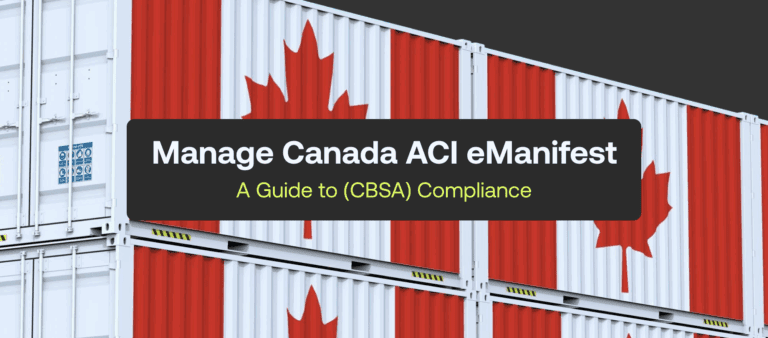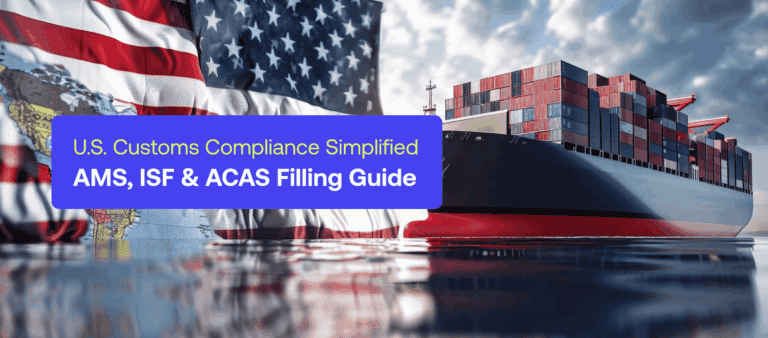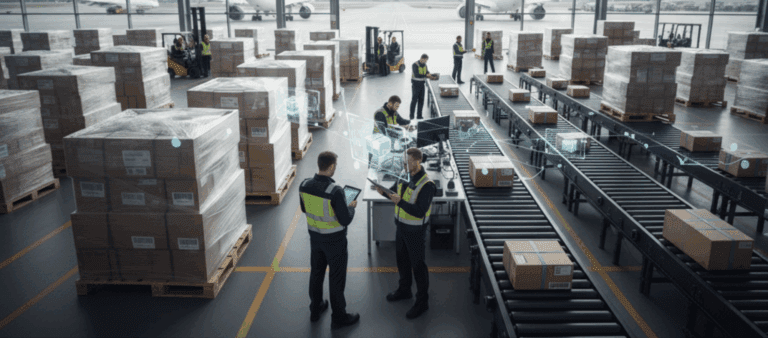EU CBAM: Is Your Product Covered? A Comprehensive Guide for Importers
- John Hall
- Customs Specialist at iCustoms.ai
What if the price of pollution were finally reflected at the border?
It is the bold goal of the EU’s Carbon Border Adjustment Mechanism (CBAM). It is a revolutionary law designed to fairly price the carbon emissions present in specific goods imported to the EU.
As the international climate policies tighten, the EU is making it clear that you must abide by its carbon regulations if you want to sell in its market.
CBAM functions as an economic leveller in addition to being an environmental policy.
It aims to stop “carbon leakage”, which occurs when businesses relocate their production to countries with laxer climate regulations, by imposing a carbon price on imports of particular carbon-intensive goods.
By doing this, CBAM encourages cleaner industrial practices and fair competition globally.
This blog post will list all of the goods categories subject to EU CBAM regulations.
Why does CBAM only focus on specific goods?
Not all imports are being targeted by the EU. Rather, CBAM concentrates on industries that are heavily exposed to global commerce and have large carbon emissions.
These are sectors with a high risk of carbon leakage, which might undermine global climate goals if businesses relocate their operations overseas to avoid EU carbon taxes.
The primary products selected for CBAM are precursors and raw materials essential to industrial production, where emissions are frequently unavoidable with existing technology.
Six high-emission industries are initially covered by the regulation:
- Iron and steel
- Cement
- Aluminium
- Fertilisers
- Electricity
- Hydrogen
Additionally, some downstream products are also included such as bolts, screws, and other comparable iron/steel items. This implies that a regulated material may still be subject to CBAM if it is exported as a finished product.
Learn more about CBAM with our detailed guide: Click here!
Sectors covered by the EU CBAM regulation
The EU CBAM applies to these sectors:
1. Iron and steel
Iron and steel production is one of the most carbon-intensive industrial processes, largely due to the use of coal-fired blast furnaces. The sector alone contributes around 7–9% of global CO₂ emissions.
CBAM targets both raw and semi-finished iron and steel products. This includes items like slabs, coils, sheets, wire rods, bars, tubes, and structural components. Many of these are used in the construction, automotive, shipbuilding, and machinery sectors.
Examples of covered goods:
- Hot-rolled and cold-rolled steel sheets
- Steel bars used in infrastructure projects
- Tubes and pipes used in oil and gas applications
- Steel fittings and structural profiles
2. Cement
Cement manufacturing produces high emissions through the calcination of limestone and the combustion of fossil fuels in kilns. The sector is responsible for approximately 8% of global CO₂ emissions.
CBAM applies to key forms of cement and intermediate materials like clinker. Both general-purpose and speciality cements are covered.
Examples of covered goods:
- Ordinary Portland cement
- Clinker used for grinding into cement
- Blended cements used in marine and industrial projects
3. Aluminium
Aluminium production consumes vast amounts of electricity, especially in the smelting stage. This makes indirect emissions (from power generation) particularly significant, especially in countries with coal-heavy energy mixes.
CBAM targets primary and semi-finished aluminium products, such as ingots, bars, rods, sheets, profiles, and foil. Recycled aluminium may also fall under regulation unless clearly differentiated.
Examples of covered goods:
- Aluminium sheets for the transport sector
- Foil for packaging and insulation
- Bars and profiles for building frameworks
What’s excluded:
Most finished aluminium products, like beverage cans, car body parts, and machinery, are not covered at this stage.
4. Fertilisers
High amounts of CO₂, methane, and nitrous oxide are produced during energy-intensive chemical processes used in fertiliser manufacturing, such as ammonia synthesis.
CBAM regulates potash and nitrogen-based fertilisers and the raw materials needed to make them, including ammonia and nitric acid.
Covered products examples include:
- Fertilisers containing urea and ammonium nitrate
- Blends of fertiliser for specific crops
- Raw materials needed to make fertiliser
5. Electricity
When electricity is imported from non-EU countries, the carbon intensity depends on how it’s generated. Imports from coal-dependent grids carry high emissions.
All imports of electricity from non-EU countries not integrated with the EU’s Emissions Trading System (ETS) are covered. Exemptions apply for countries like Norway with clean energy systems.
Examples of covered goods:
- Grid imports from coal- or gas-powered networks
- Renewable electricity imports (if not verified, may still be covered)
Emission intensity must be calculated based on the country of origin’s energy mix. Proper documentation is required for exemptions.
6. Hydrogen
While hydrogen is often viewed as a clean fuel, most of it today is “grey hydrogen,” produced using fossil fuels through carbon-heavy methods like steam methane reforming.
CBAM applies to hydrogen that’s produced using conventional, high-emission processes. “Green hydrogen” (from renewable electrolysis) is not covered, provided emissions are verified.
Examples of covered goods:
- Grey hydrogen used in refining and industrial processes
- Hydrogen imported for use in steel or chemical manufacturing
Importers must disclose the method of production and provide emissions data.
7. Downstream Iron and Steel Products
To prevent circumvention of the rules, CBAM also applies to some finished or semi-finished goods made from CBAM-covered materials.
Certain downstream products such as screws, bolts, nuts, washers, and pipe fittings are included, especially when their origin or material composition suggests they are derived from high-emission steel.
Examples of covered goods:
- Fasteners used in machinery and automotive production
- Steel flanges and couplings for pipelines
How to determine if your imports are subject to CBAM?
It’s critical to determine whether the items you’re bringing into the EU are covered by the Carbon Border Adjustment Mechanism (CBAM).
Here is how you can determine it:
1. Identify your products' CN codes
Start by assigning the CN (Combined Nomenclature) codes, which are common EU products classification numbers, to the items you have imported. CBAM is only applicable to specific products listed under specific CN codes in Annex I of the regulation.
2. Check the product's manufacturing process and country of origin
Your products are automatically excluded if they originate from countries that are part of the EU Emissions Trading System, such as Norway, Iceland, Liechtenstein, or Switzerland. You must also evaluate the production methods used in all other countries, particularly if there are significant carbon emissions involved.
3. Check the official guidelines for CBAM
Check the EU’s official CBAM documents against the CN code and production details of your goods. You can also use an online self-assessment tool to confirm whether your products are impacted. Remember that the scope of CBAM may grow in the future, so it’s a good idea to continue checking frequently.
4. Collaborate across teams
One department cannot handle CBAM compliance on its own. Your sustainability and trade compliance teams should coordinate to verify CN codes, supplier emissions data, and manufacturing methods.
Are there any exemptions?
Yes, but only a few.
During the transitional phase (which ends on 31 December 2025), some exemptions are in place to ease the burden for small importers and certain trade flows:
- Low-value consignments under €150 don’t need to be reported.
- Returned goods (re-imported without any changes) are excluded.
- Outward processing goods, items temporarily exported for processing and then re-imported, are not subject to CBAM.
There’s also a proposal from the European Commission to exempt companies importing less than 50 tonnes per year of certain goods (iron, steel, aluminium, cement, and fertilisers).
This idea is part of the Omnibus Simplification package, but it hasn’t been approved yet, so for now, the existing CBAM rules still apply.
Get CBAM ready
Whether you’re a manufacturer, importer, or supplier, the time to prepare is now.
CBAM is shaping the future of international trade, and only those who adapt will stay competitive.
You may also like:
Simplify Customs with our Powerful Customs Management Software
Automate declarations, track shipments, & ensure compliance.
About iCustoms
Simplify Customs with our Powerful Customs Management Software
Automate declarations, track shipments, & ensure compliance.





